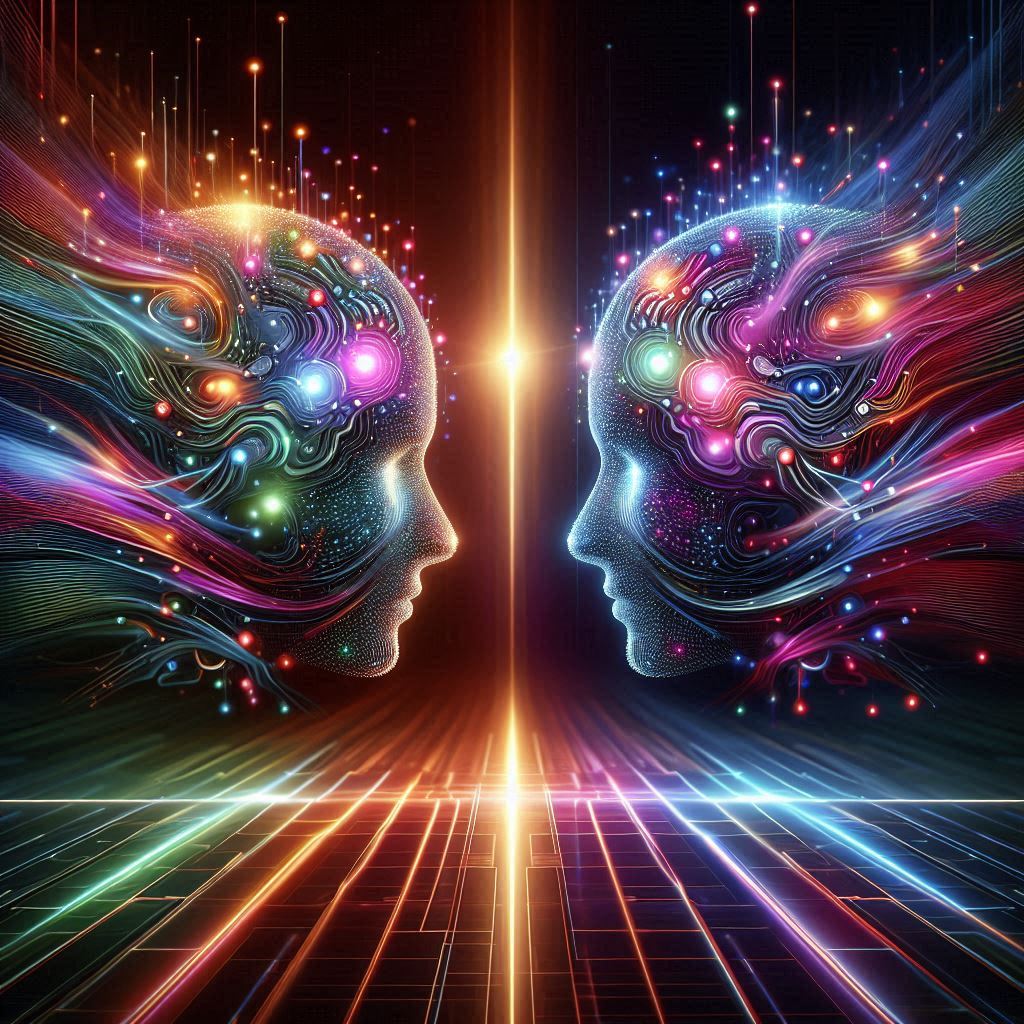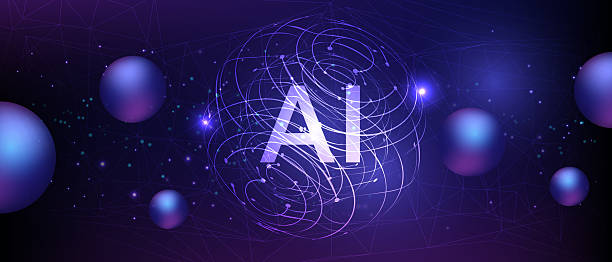In the world of artificial intelligence, few innovations have captured both imagination and impact as powerfully as Generative Adversarial Networks, or GANs. They represent a profound shift in how machines learn to create, not merely recognize or classify. GANs can generate human-like faces that do not exist, compose new artwork in the style of masters, synthesize realistic voices, and even simulate complex scientific data. The technology behind GANs has transformed creative industries, research, and entertainment, while also raising deep ethical and philosophical questions about authenticity and reality. Understanding how GANs work reveals not only a marvel of mathematical elegance but also a new paradigm for machine intelligence—one rooted in the adversarial dynamics of competition and cooperation.
The Origin and Concept of Generative Adversarial Networks
GANs were introduced in 2014 by Ian Goodfellow and his colleagues at the University of Montreal, in what is now considered one of the most influential papers in modern machine learning. The central idea is deceptively simple yet incredibly powerful: train two neural networks together in a game-like competition where each tries to outsmart the other. One network, the “generator,” creates synthetic data, while the other, the “discriminator,” tries to distinguish between the fake and the real.
The term “adversarial” reflects this rivalry. The generator aims to produce data so convincing that the discriminator cannot tell the difference between real and generated samples. The discriminator, in turn, improves by learning to detect even subtle differences. Through this constant contest, both networks gradually improve, resulting in a generator that produces outputs nearly indistinguishable from real data.
This concept draws inspiration from human learning and creativity. Just as an artist refines their work by receiving feedback from critics, the generator refines its ability to produce realistic data through adversarial feedback from the discriminator. Over time, the generator learns to model the true distribution of the training data, effectively learning how to “create” new examples that appear authentic.
The Architecture of a GAN
A Generative Adversarial Network consists of two deep neural networks: the generator (G) and the discriminator (D). Each network plays a distinct role, yet their interaction is what drives the learning process.
The generator’s job is to produce data that resembles the training distribution. It typically starts with random noise—a vector of numbers sampled from a probability distribution—and transforms this noise into structured data through a series of learned transformations. These transformations are implemented through layers of neurons that progressively shape the noise into meaningful patterns, whether images, sounds, or other data types.
The discriminator, by contrast, is a classifier. It receives both real data from the training set and fake data produced by the generator. Its goal is to predict whether each input is genuine or synthetic. In mathematical terms, it outputs a probability indicating how likely it is that the input came from the real dataset.
During training, the two networks are optimized with opposing objectives. The discriminator seeks to maximize its accuracy in classification, while the generator seeks to minimize it by producing increasingly realistic outputs. The result is a minimax game, where one player’s gain is the other’s loss.
Formally, the GAN training objective is expressed as a minimax optimization problem:
V(D, G) = E[log D(x)] + E[log(1 – D(G(z)))]
Here, x represents real data, z represents random noise, D(x) is the discriminator’s prediction for real samples, and G(z) is the generator’s output. The discriminator tries to maximize this value, while the generator tries to minimize it. The equilibrium occurs when D(x) = 0.5 for all inputs—meaning the discriminator can no longer distinguish real from fake.
The Generator: Turning Noise into Data
At the heart of the generator lies the remarkable ability of neural networks to learn complex transformations. The generator begins with an unstructured input, often called a latent vector or latent code. This vector typically contains random numbers sampled from a Gaussian or uniform distribution. The idea is that each point in this latent space represents a potential feature combination that the generator can map to a realistic data instance.
Through multiple layers of nonlinear transformations, the generator converts this vector into structured output. For images, these transformations might involve upsampling and convolutional operations that gradually form textures, shapes, and colors. Early layers capture high-level structures, while later layers refine details. In text or audio generation, the process involves recurrent or transformer-based layers that shape sequences rather than pixels.
Training the generator is challenging because it does not receive direct feedback about how “good” its outputs are. Instead, it receives gradient updates from the discriminator’s judgments. When the discriminator successfully identifies a fake, the generator learns how to adjust its parameters to make its next output more convincing. Over many iterations, this indirect feedback allows the generator to approximate the real data distribution with increasing precision.
The Discriminator: The Adversarial Critic
The discriminator serves as the critical eye that evaluates the generator’s performance. It is usually implemented as a convolutional neural network for image-based GANs, though its design varies across domains. The discriminator takes an input sample and outputs a probability score indicating whether the sample is real or generated.
In early stages of training, the discriminator quickly learns to distinguish fake samples, as the generator’s outputs are poor. However, as the generator improves, the task becomes harder. The discriminator must learn to detect subtler inconsistencies—unnatural textures, unrealistic lighting, or statistical anomalies. This adversarial relationship ensures that both models continuously push each other toward improvement.
An interesting property of the discriminator is that it implicitly learns a powerful representation of the data distribution. Even though its goal is classification, its internal layers encode rich features that can be reused for other tasks, such as feature extraction or unsupervised learning. In fact, many researchers have repurposed discriminators from trained GANs for downstream machine learning applications.
The Adversarial Training Process
Training a GAN is fundamentally different from traditional supervised learning. Instead of a single objective function, GANs involve two competing objectives that must be balanced dynamically. The process unfolds in alternating steps: the discriminator is trained while keeping the generator fixed, and then the generator is trained while keeping the discriminator fixed.
During the discriminator’s update, real samples from the dataset are labeled as “real” and fake samples from the generator as “fake.” The discriminator adjusts its parameters to correctly classify both. During the generator’s update, the goal is to produce fake samples that the discriminator misclassifies as real.
This alternating optimization creates a feedback loop. If the discriminator becomes too powerful too quickly, the generator struggles to learn, receiving almost no useful gradient. Conversely, if the generator outpaces the discriminator, the discriminator’s feedback becomes meaningless. Maintaining equilibrium is thus one of the biggest challenges in training GANs. Researchers often describe this as a delicate dance—each model must improve at roughly the same rate for the training to converge.
To stabilize training, techniques such as feature matching, gradient penalties, and Wasserstein loss functions have been introduced. The latter, particularly in the Wasserstein GAN (WGAN) framework, replaces the traditional binary classification loss with a continuous distance measure between real and fake distributions, leading to smoother convergence and more stable gradients.
Understanding the Latent Space
One of the most fascinating aspects of GANs is their use of latent space—the abstract, multidimensional space from which the generator draws its input noise. This latent space encodes high-level features of the generated data. Small movements within this space correspond to meaningful changes in the output. For instance, in a GAN trained on human faces, moving in one direction in latent space might gradually change the expression from neutral to smiling, while another direction might alter the lighting or age.
This smooth and interpretable mapping suggests that GANs learn an internal representation of reality that captures the essence of the data. By interpolating between points in latent space, researchers can generate intermediate outputs that transition naturally between two examples. This property has been used to explore creativity, morph images, and even manipulate specific attributes, such as gender, hairstyle, or facial orientation.
Latent space manipulation is not limited to visual data. In music and text generation, similar principles apply—adjusting latent vectors can control rhythm, tone, or thematic content. The latent space effectively becomes a map of possibilities, allowing controlled exploration of the learned data distribution.
Variants and Evolution of GAN Architectures
Since the introduction of the original GAN, a vast number of variants have emerged, each addressing specific limitations or expanding capabilities. The evolution of GAN architectures has been one of the most dynamic areas in AI research.
Deep Convolutional GANs (DCGANs) represented a major milestone, introducing convolutional layers that improved the visual quality and stability of generated images. DCGANs demonstrated that structured, hierarchical representations could yield realistic outputs.
Conditional GANs (cGANs) added an element of control by incorporating conditional information—such as class labels or attributes—into both the generator and discriminator. This allowed targeted generation, such as creating images of specific categories or translating between domains (e.g., turning sketches into photos).
Pix2Pix and CycleGAN extended this concept to image-to-image translation, enabling tasks like turning daytime scenes into nighttime, or converting photographs into artistic styles. These models did not require paired datasets, making them extremely versatile for creative and scientific applications.
Progressive GANs introduced a training strategy where the generator and discriminator gradually increase in complexity, starting from low-resolution outputs and progressively refining details. This approach enabled the generation of ultra-high-resolution images, such as realistic human faces, which famously powered projects like “This Person Does Not Exist.”
StyleGAN and its successors further refined the concept by introducing style-based generation. Instead of a single latent vector, StyleGAN manipulates features at different layers, allowing fine-grained control over attributes such as texture, color, and composition. The result is unparalleled realism and flexibility in image synthesis.
Applications of GANs Across Domains
The potential of GANs extends far beyond image generation. Their ability to learn data distributions has unlocked applications across numerous fields.
In visual arts and design, GANs enable machines to create new artworks, blend styles, or generate design prototypes. In fashion, they are used to simulate clothing on virtual models, accelerating design workflows. In entertainment, GANs generate lifelike faces, de-age actors in films, and synthesize virtual characters for games.
In scientific research, GANs are used to simulate molecular structures, accelerate drug discovery, and generate training data for other machine learning models. In astronomy, they reconstruct high-resolution images of galaxies from low-quality data. In medicine, they assist in generating realistic medical images for training diagnostic systems while preserving patient privacy.
GANs also play a vital role in data augmentation, where limited datasets are expanded with synthetic examples to improve model robustness. In cybersecurity, they help generate adversarial examples to test and strengthen AI systems against attacks.
Speech and audio synthesis have likewise benefited from GAN-based architectures. Models such as WaveGAN and MelGAN produce natural-sounding audio directly from waveforms or spectrograms, enhancing voice generation and sound design.
Challenges in Training GANs
Despite their power, GANs are notoriously difficult to train. The adversarial nature of the process often leads to instability, where one network overpowers the other or the system fails to converge. Several characteristic problems plague GAN training, including mode collapse, vanishing gradients, and non-convergence.
Mode collapse occurs when the generator produces limited variations of outputs that still fool the discriminator. Instead of capturing the full diversity of the data distribution, it fixates on a few patterns. This reduces the richness of generated samples and limits practical use.
Vanishing gradients arise when the discriminator becomes too strong, leaving the generator with little feedback to learn from. Conversely, if the discriminator is too weak, the generator receives inaccurate feedback and fails to improve meaningfully. Balancing this delicate interplay requires careful tuning of architectures, learning rates, and loss functions.
Another challenge lies in evaluation. Measuring the quality of generated data is not straightforward. While metrics like Inception Score and Fréchet Inception Distance (FID) provide quantitative assessments, they cannot fully capture perceptual realism or diversity. Human evaluation often remains the final arbiter of quality, especially in creative applications.
Ethical and Societal Implications
The power of GANs to generate hyper-realistic data has sparked profound ethical debates. When a machine can create convincing images, voices, or videos indistinguishable from reality, the line between truth and fabrication blurs.
Deepfakes—synthetic media that convincingly depict real people doing or saying things they never did—represent the most visible and controversial application of GANs. While they can be used creatively in entertainment and art, they also pose risks of misinformation, identity theft, and political manipulation. The ability to fabricate evidence challenges long-standing notions of trust, authenticity, and accountability.
In response, researchers and policymakers are developing detection tools, watermarking techniques, and legal frameworks to combat malicious use. Yet, as generation techniques evolve, detection becomes increasingly difficult. This technological arms race between creation and detection underscores the dual-edged nature of generative AI.
Beyond deception, GANs also raise questions about creativity and authorship. When a machine generates an artwork, who owns the copyright—the developer, the user, or the machine itself? As GANs become collaborators in creative processes, society must redefine notions of originality, artistic intent, and ownership in the digital age.
The Theoretical Foundations of GAN Training
At its core, GAN training is a form of game theory applied to neural networks. The generator and discriminator engage in a two-player zero-sum game where the improvement of one leads to the degradation of the other’s performance. The goal of training is to reach a Nash equilibrium—a stable state where neither network can improve without worsening the other.
In practice, achieving this equilibrium is extremely challenging. The optimization landscape is highly non-convex, with multiple local minima and saddle points. The generator’s loss depends on the discriminator’s parameters and vice versa, creating a dynamic and often chaotic training process.
To address these issues, researchers have developed theoretical refinements that stabilize the game. Wasserstein GANs, for example, reformulate the loss function based on Earth Mover’s Distance, providing smoother gradients and improving convergence. Other approaches, like Least-Squares GAN and Energy-Based GAN, modify the objective to reduce sensitivity to discriminator saturation.
From a probabilistic perspective, GANs can be understood as learning to approximate the true data distribution by minimizing the divergence between the real and generated data distributions. Different GAN variants correspond to different choices of divergence measures, each with its trade-offs in stability and fidelity.
Future Directions in GAN Research
The future of GANs lies in their integration with other AI paradigms and their adaptation to new forms of data. Hybrid models that combine GANs with diffusion models, transformers, or reinforcement learning show promise in overcoming traditional limitations.
GANs are also being extended into domains such as 3D modeling, video synthesis, and multimodal generation, where they can combine text, image, and sound into coherent outputs. Projects like text-to-image generation (e.g., DALL·E and Stable Diffusion) draw conceptual lineage from GANs, even as they employ different mechanisms.
Another emerging area is self-supervised learning, where GAN-like objectives are used to train representations without labeled data. In these systems, the discriminator’s role evolves from simple binary classification to a more general form of contrastive learning that benefits broader AI development.
Sustainability and efficiency are also key concerns. Training large GANs requires immense computational resources. Research into more efficient architectures, lightweight generators, and transfer learning aims to make GAN technology accessible and environmentally responsible.
Ethical research continues alongside technical progress. The AI community is actively exploring fairness-aware GANs that reduce bias in generated data and ensure equitable outcomes across demographic groups. The challenge is not merely to make GANs more powerful but to align them with human values and social good.
Conclusion
Generative Adversarial Networks have redefined what it means for machines to “imagine.” Through the interplay of creation and criticism, they simulate one of the most fundamental dynamics of intelligence itself—the balance between invention and evaluation. From their mathematical elegance to their creative potential, GANs stand as one of the most remarkable achievements in modern artificial intelligence.
Understanding how GANs work reveals the beauty of adversarial collaboration: progress through competition, learning through challenge, and perfection through imperfection. As they continue to evolve, GANs will shape not only the future of technology but also our understanding of creativity, reality, and what it means to create in the age of intelligent machines.






